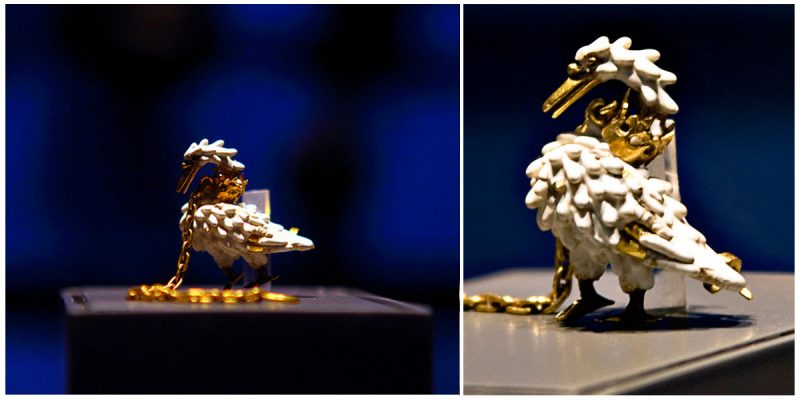It is said that in about 1400, the Dunstable Swan Jewel was made, in either England or France. It is the only surviving example of a livery badge and it was probably the property of Henry V of England, who was Prince of Wales from 1399.
The swan jewel is a rare medieval gold and enamel brooch which was compared to the personal badges worn by King Richard II called the White Hart. It was excavated in 1965 by Manshead Archaeological Society in Friary Field.
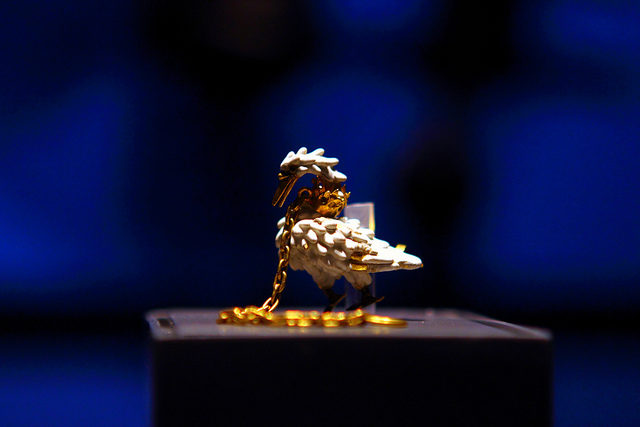
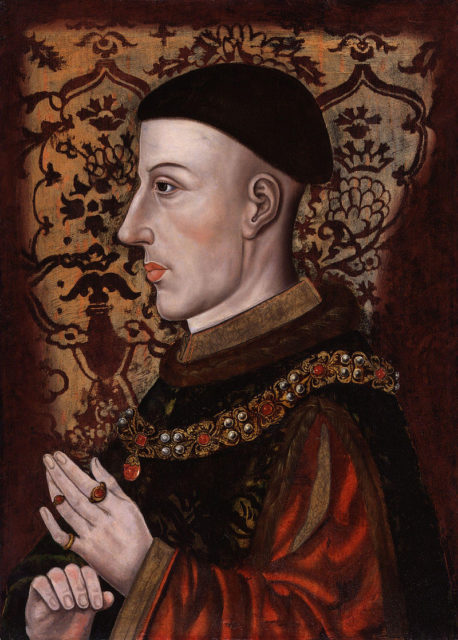
The swan is 3.2 cm high and 2.5 cm wide and is made of white and black enamel with a golden collar in the shape of a crown decorated with six fleur-de-lys tines. It is a standing mute swan from the family Anatidae which has a golden chain attached to the collar that ends with a ring. On the back of the jewel, there is a pin and a catch. It is considered to be one of the most expensive forms of a livery badge, especially common in England from the mid 14th century until the end of 15th century.
The livery badges were only ever given by an important figure to his supporters or his favorite employees. Every livery badge was uniquely decorated with gold and many gems. One of the examples for this kind of jewel are the lion pendants in the National Gallery in London, worn by Sir John Donne and his wife, in their portraits by Hans Memling.
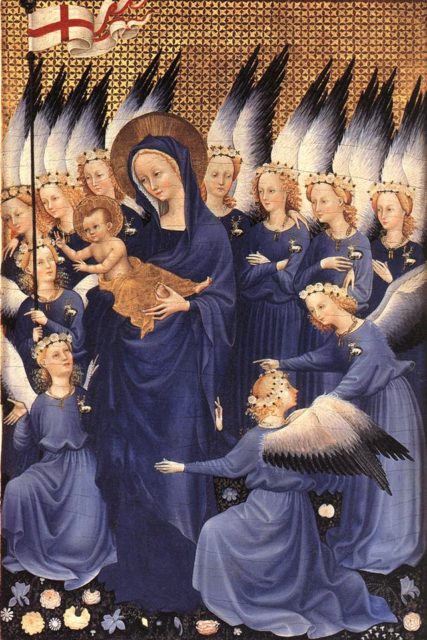
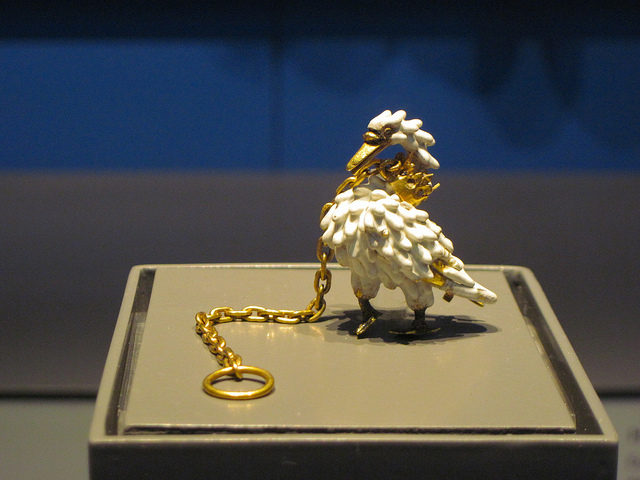
There is a legend connected with the livery badge shaped like a swan. It is about a mysterious rescuer who is trying to save a damsel, defending her from a boat shaped like a swan, and he must never be asked about his name by anyone. The legend is called the Swan Knight or Knight of the Swan and until today nobody knows the specific identity of this knight.
It was associated with the ancestors of Godfrey of Bouillon by a group of Old French chansons de geste, called the Crusade cycle. One of the most famous livery badges in the form of a swan is the Bohun swan, worn by the Bohun family, and after them, it was the heraldic badge of King Henry IV of England.

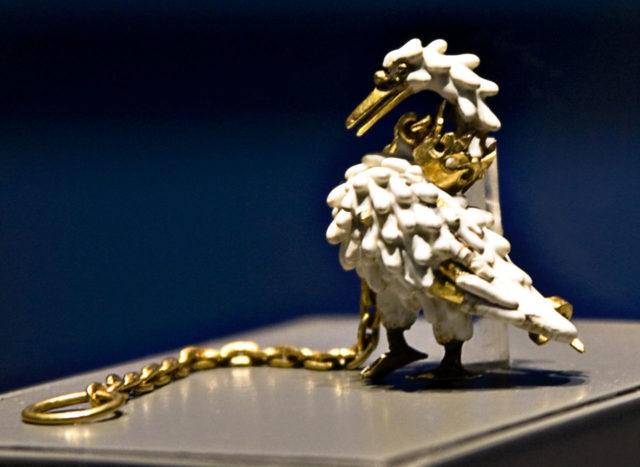
Later, the swan was adopted by the House of Lancaster who used it as a livery badge for over a century. The Dunstable Swan jewel was above ground until the destruction of the buildings after the Dissolution of the Monasteries in the late 1530s.
We have another story for you: The Silver Swan: The 18th Century Clockwork Automaton
The jewel was bought by the British Museum in 1966, and it is on display in Room 40 until this day. Other contributions were made by the Art Fund, the Worshipful Company of Goldsmiths, and the Pilgrim Trust.
